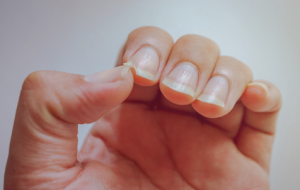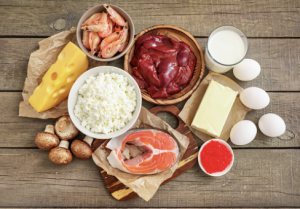Are you consistently experiencing low energy and fatigue?
The average person who yawns frequently might chalk it up to tiredness or plain old boredom — the idea of a nutritional deficiency may not even cross one’s mind.
Iron deficiency is particularly insidious because its symptoms seem so innocuous.
But as the body becomes more deficient in iron and anemia worsens, the signs and symptoms intensify.
Often, by the time the symptoms get serious enough for you to notice and seek professional assistance, your body may have already suffered permanent damage to your heart and other organs.
What causes iron deficiency?
Many equate iron deficiency with anemia, the condition in which your body has a lower than normal number of red blood cells. But there is a whole other category of iron deficiency that precedes anemia — i.e. you can be iron-deficient without being anemic.

Quite simply, iron deficiency occurs when the body needs more iron than it is getting.
The body needs the iron to make hemoglobin, an iron-rich protein in red blood cells.
The blood that circulates throughout the body delivers oxygen, removes carbon dioxide, and carries life-sustaining nutrients.
By transporting long-distance messengers such as hormones, blood helps the various parts of the body communicate with each other.
This is carried out by blood cells, working in partnership with the liquid part of the blood (plasma). Most of the cells that make up your blood are red blood cells (erythrocytes). White blood cells (leukocytes) are also present, defending the body against foreign material, including infections, viruses, and fungi.
If you don’t have enough hemoglobin-carrying red blood cells, your heart has to work harder to move oxygen-rich blood through your body.
This can leave you feeling tired, weak, irritable and unable to focus.
Iron deficiency can also be caused by long-term blood loss due to factors such as various types of cancers and tumours, or certain medical conditions that cause internal bleeding — for example, a peptic ulcer or polyps (tissue growths) in the colon or intestine.
Regular use of pain relievers can also cause bleeding in the stomach.
It may also occur if there is not enough iron-containing food in the person’s diet or if there is poor absorption of iron — for example, if you have celiac disease or have had a gastric bypass surgery.
Signs of iron deficiency

- Extreme fatigue
- Pale skin
- Weakness
- Shortness of breath
- Chest pain
- Frequent infections
- Headaches
- Irritability
- Dizziness or lightheadedness
- Cold hands and feet
- Low blood pressure (especially when going from lying or sitting to standing)
- Inflammation or soreness of your tongue
- Cracks in the sides of the mouth
- Brittle nails
- Fast heartbeat
- Unusual cravings for non-nutritive substances, such as ice, dirt, paint or starch (this is called pica)
- Poor appetite, especially in infants and children
- Slow growth and development in children, as well as behavioural problems
- An uncomfortable tingling or crawling feeling in your legs (restless legs syndrome)
While anyone can become iron deficient, it is crucial to examine your iron if you are in the following risk groups:
- Women of child-bearing age who experience heavy menstrual bleeding
- Pregnant women
- People with poor diets
- Frequent blood donors
- Infants and children, especially those born prematurely or experiencing a growth spurt
- Vegetarians who do not replace meat with another iron-rich food
Counteracting your iron deficiency
If it is not treated, iron deficiency may become severe enough to interfere with daily life. Maintaining an iron-rich diet can help treat or prevent iron deficiency. Additionally, vitamin C helps your body absorb iron. Some iron-rich foods are:
- Foods high in vitamin C include:Meat, such as lamb, pork, chicken, and beef
- Beans
- Pumpkin and squash seeds
- Leafy greens, such as spinach
- Raisins and other dried fruit
- Eggs
- Seafood, such as clams, sardines, shrimp, and oysters
- Iron-fortified dry and instant cereals
- Citrus fruits, such as oranges, grapefruit, strawberries, kiwis, guava, papaya, pineapple, melons, and mango
- Broccoli
- Red and green bell peppers
- Brussels sprouts
- Cauliflower
- Tomatoes
- Leafy greens

Iron deficiency is not something that you should self-diagnose and treat. While iron is necessary for your diet, it is important not to assume you have a deficiency and then overcompensate with iron supplements.
At the low end of the spectrum, iron overload can cause constipation or diarrhoea — on the other end of the spectrum, it can cause serious harm to your liver and other organs.
It is best to visit your doctor, who will conduct the necessary blood tests and recommend a course of treatment.
To diagnose an iron deficiency, a blood test is done to measure ferritin levels, the iron stores in your blood. A test called a complete blood cell (CBC) test is usually the first test a doctor will use. A CBC test measures the amount of all components in the blood, including:
- RBCs
- white blood cells (WBCs)
- hemoglobin
- hematocrit
- platelets
For some, iron deficiency is temporary and can be counteracted by minor diet changes, whereas for others iron-deficiency anemia may be the resulting diagnosis, and a more serious commitment to iron supplements and frequent blood testing may be needed.

